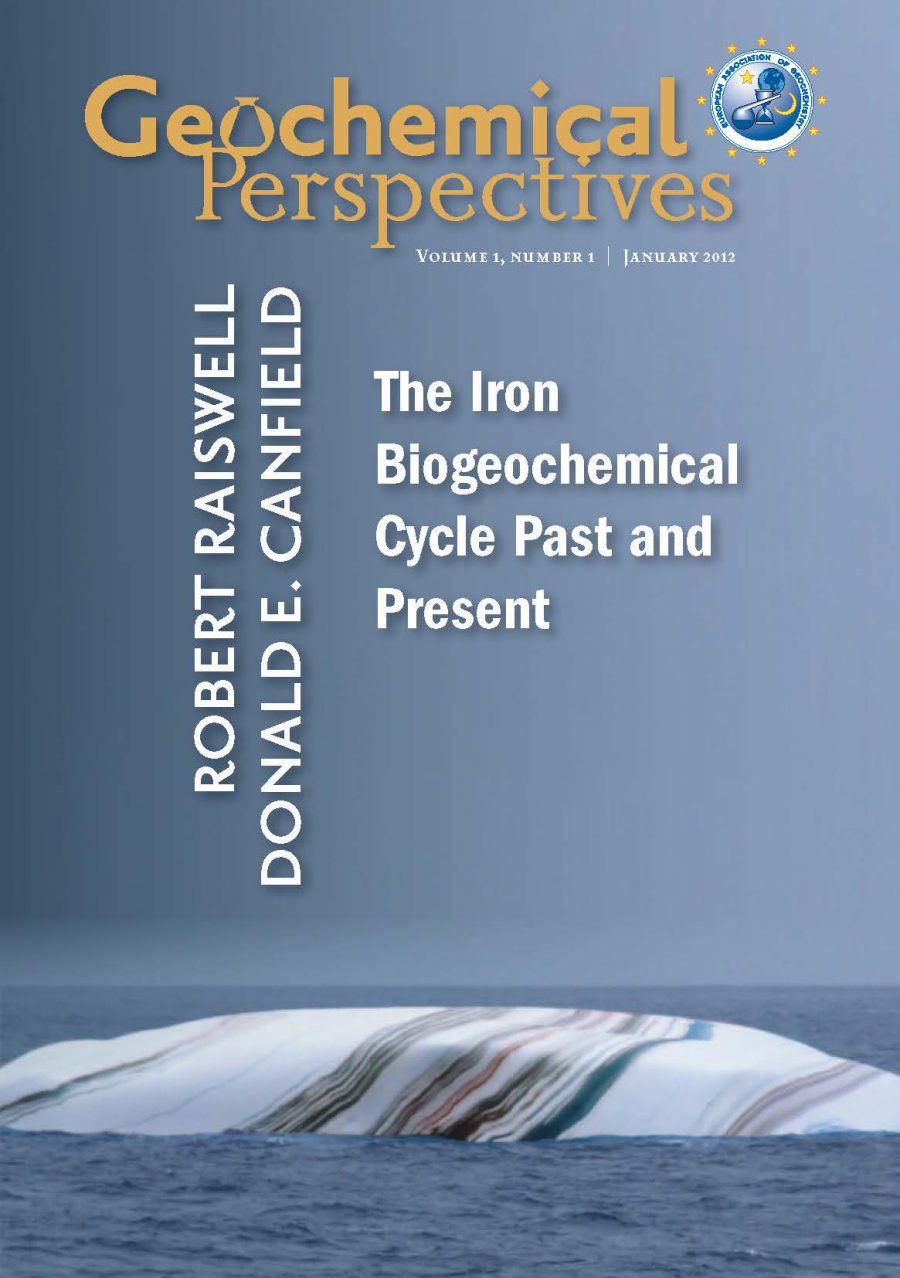
The Iron Biogeochemical Cycle Past and Present
by Robert Raiswell1 and Donald E. Canfield2doi: 10.7185/geochempersp.1.1 | Volume 1, Number 1 (pages 1-220)
Abstract
Presented here is a combined historical account, current synthesis and a perspective of how the modern Fe cycle functions, and how this cycle has evolved through geologic time. We begin by highlighting how new developments in nanogeoscience demonstrate the importance of nanoparticulate Fe (oxyhydr)oxide aggregates in the modern iron cycle. We further document how these aggregates are supplied from shelf sediments, aeolian dust and icebergs to the global ocean. Based on these observations, we present a kinetic model evaluating the supply of bioavailable Fe to surface seawater by ferrihydrite dissolution, photoreduction and siderophore-aided dissolution. The model indicates that the rate of delivery of bioavailable Fe from icebergs to the Southern Ocean is at least as large as that by wind-blown dust.
We provide a historical perspective on the evolution of ideas as to how sedimentary pyrite formation is controlled and how these ideas led to the development of the Fe-based palaeo-environmental proxies widely used today. This provides a springboard into our discussion of the ancient Fe cycle, which begins with a survey of how Fe interacts with a variety of other elements of biogeochemical interest including sulphur, oxygen and nitrogen. We highlight how interactions between these elements have evolved through geologic time, and how these interactions define the evolution of ocean and atmospheric chemistry. It is clear that the Fe cycle has gained a prominent role in regulating the biogeochemical function of the oceans through time. We offer, in the end, suggestions and a geochemical perspective as to how recent momentum in our understanding of the Fe cycle may be harnessed into catalysing future progress in the field.

